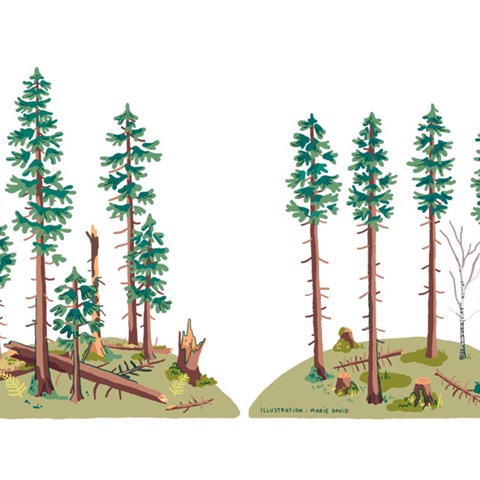Nordic conference on the effects of forest management and global change on boreal forest ecosystems

A recent conference in Norway brought together researchers from the Nordic countries to share insights on the impacts of forestry and climate change on biodiversity, ecological processes, ecosystem functioning, and carbon sequestration in boreal forests.
At the Norwegian Forest Museumin Norway, a conference brought together researchers from the Nordic countries to share insights and engage in discussions on the impacts of forestry and climate change on biodiversity, ecological processes, ecosystem functioning, and carbon sequestration in boreal forests.
Several employees from the Swedish University of Agricultural Sciences (SLU) actively contributed to the conference, presenting research spanning a wide range of topics, including forest biodiversity and forest ecological processes. On the third day, the conference welcomed participation from forest owners, the forest industry, and stakeholder organizations in Norway
The EcoForest research project, in collaboration with supporting partners, organised the conference. Within this initiative, Norwegian researchers explore the long-term consequences of conventional forestry practices on above- and below-ground biodiversity, with special focus on soil biodiversity and dead wood.
They examine how the functions performed by the organisms within forest ecosystems—such as bacteria, fungi, and insects—impact carbon storage processes. The project entails conducting comparative studies between older forests that have experienced clear-cutting and forests that have never undergone such practices.
Mari Jönsson from SLU Future Forests delivered a presentation titled "Conservation Effectiveness of Retention Forestry in Boreal Forests." In her talk, she shared the findings from long-term follow-up studies on species of conservation concern and various structures such as deadwood and habitat heterogeneity in different types of retention types post-final harvest.
Additionally, preliminary results from climate buffering studies of retention forestry, clear-cutting, and old set-aside forests were presented. Participants emphasized the need for clearer guidelines within the Forest Stewardship standards (FSc) in Nordic countries, particularly regarding the sizes, structures and types of retained tree groups needed in managed forests.